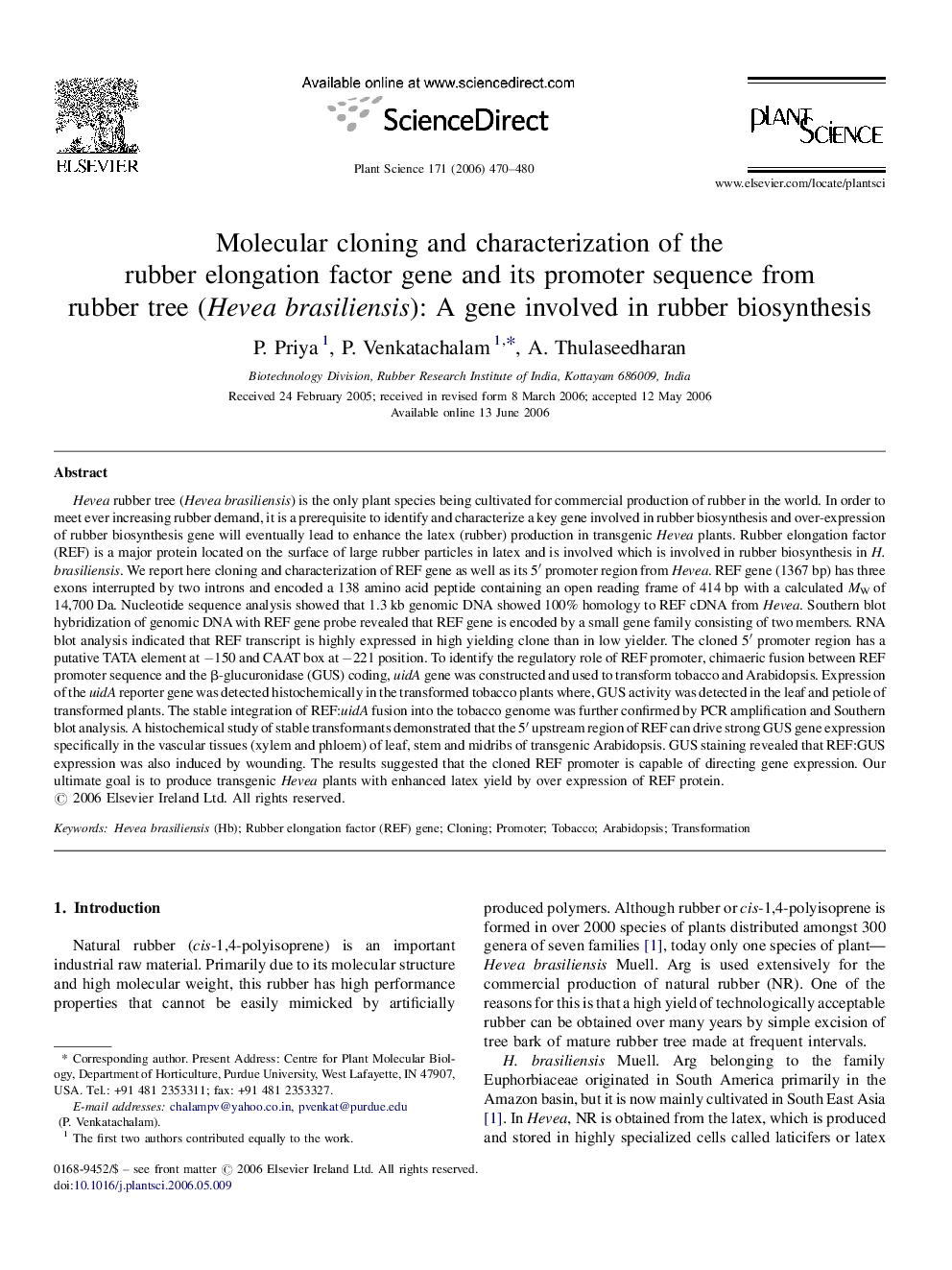| کد مقاله | کد نشریه | سال انتشار | مقاله انگلیسی | نسخه تمام متن |
|---|---|---|---|---|
| 2018822 | 1067875 | 2006 | 11 صفحه PDF | دانلود رایگان |

Hevea rubber tree (Hevea brasiliensis) is the only plant species being cultivated for commercial production of rubber in the world. In order to meet ever increasing rubber demand, it is a prerequisite to identify and characterize a key gene involved in rubber biosynthesis and over-expression of rubber biosynthesis gene will eventually lead to enhance the latex (rubber) production in transgenic Hevea plants. Rubber elongation factor (REF) is a major protein located on the surface of large rubber particles in latex and is involved which is involved in rubber biosynthesis in H. brasiliensis. We report here cloning and characterization of REF gene as well as its 5′ promoter region from Hevea. REF gene (1367 bp) has three exons interrupted by two introns and encoded a 138 amino acid peptide containing an open reading frame of 414 bp with a calculated MW of 14,700 Da. Nucleotide sequence analysis showed that 1.3 kb genomic DNA showed 100% homology to REF cDNA from Hevea. Southern blot hybridization of genomic DNA with REF gene probe revealed that REF gene is encoded by a small gene family consisting of two members. RNA blot analysis indicated that REF transcript is highly expressed in high yielding clone than in low yielder. The cloned 5′ promoter region has a putative TATA element at −150 and CAAT box at −221 position. To identify the regulatory role of REF promoter, chimaeric fusion between REF promoter sequence and the β-glucuronidase (GUS) coding, uidA gene was constructed and used to transform tobacco and Arabidopsis. Expression of the uidA reporter gene was detected histochemically in the transformed tobacco plants where, GUS activity was detected in the leaf and petiole of transformed plants. The stable integration of REF:uidA fusion into the tobacco genome was further confirmed by PCR amplification and Southern blot analysis. A histochemical study of stable transformants demonstrated that the 5′ upstream region of REF can drive strong GUS gene expression specifically in the vascular tissues (xylem and phloem) of leaf, stem and midribs of transgenic Arabidopsis. GUS staining revealed that REF:GUS expression was also induced by wounding. The results suggested that the cloned REF promoter is capable of directing gene expression. Our ultimate goal is to produce transgenic Hevea plants with enhanced latex yield by over expression of REF protein.
Journal: Plant Science - Volume 171, Issue 4, October 2006, Pages 470–480